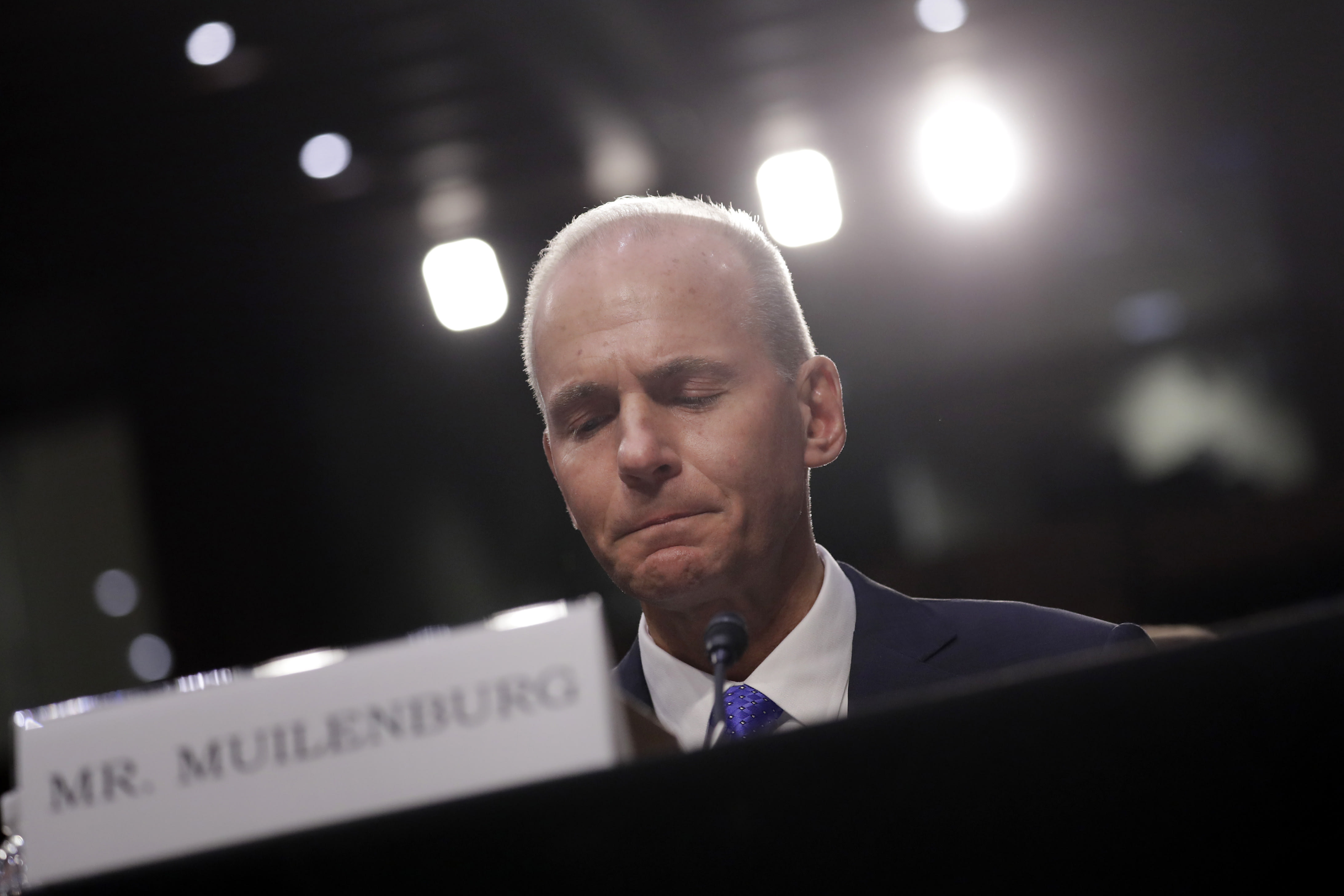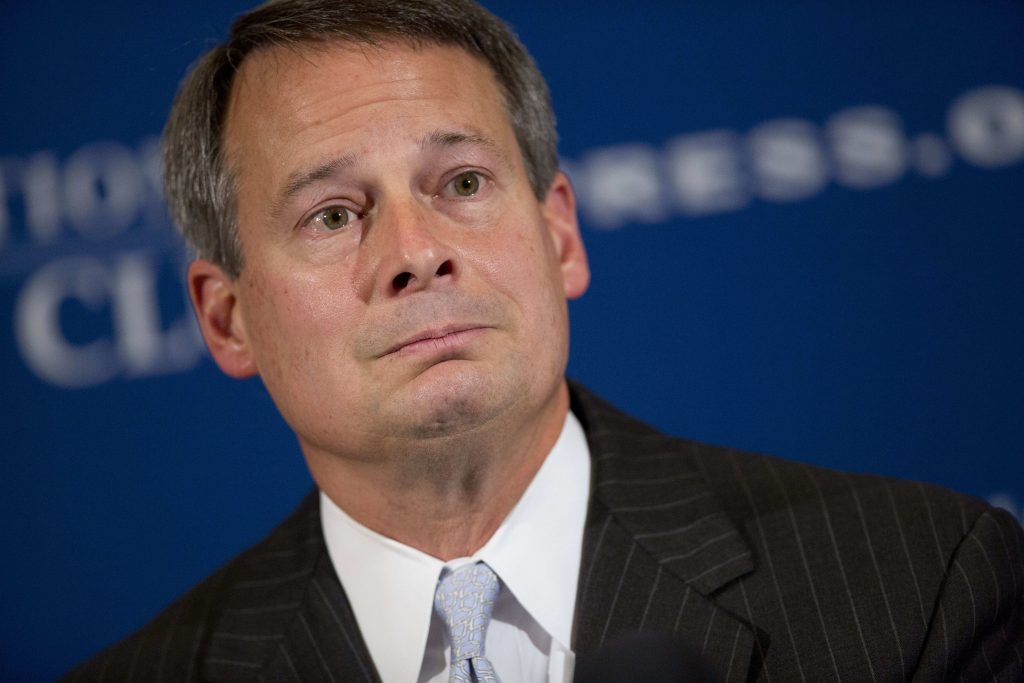
Dennis Muilenburg, chief executive officer of Boeing Co., listens during a Senate Commerce, Science and Transportation Committee hearing in Washington, D.C., U.S., on Tuesday, Oct. 29, 2019.
Bloomberg | Bloomberg | Getty Images
Boeing‘s board stripped CEO Dennis Muilenburg of his chairmanship on Oct. 11 as the company struggled with the aftermath of two crashes of its best-selling plane, the 737 Max.
While the crisis is specific to Boeing, separating the two roles is becoming more common among large corporations and some experts say it’s an overdue shift that could improve accountability.
“It doesn’t make much sense to have the person who’s being monitored by the board to chair the group monitoring them,” said Charles Elson, a finance professor and director of the John L. Weinberg Center for Corporate Governance at the University of Delaware.
In 2005, 30% of chairman and CEO roles at companies in the S&P 500 were split, according to Institutional Shareholder Services, a proxy advisory firm. That has increased to 53% this year.
Dividing the roles is a decision facing companies as CEO turnover — from troubled co-working startup WeWork to McDonald‘s — is at a record pace and boards work to rebuild leadership.
Some of the country’s largest corporations, including American Airlines and Bank of America have CEOs who are also chairmen of those companies’ boards.
But some experts say dividing up those roles can provide better oversight.
When it separated the beleaguered executive’s roles, the Boeing’s board said it had “full confidence” in Muilenburg as CEO and that the decision would allow him to better focus on bringing the plane back to service, with “the board playing an active oversight role.”
Boeing’s new chairman David Calhoun echoed that statement on Tuesday during an interview with CNBC’s “Squawk Box.”
“From the vantage point of our board, Dennis has done everything right,” Calhoun said. “Remember, Dennis didn’t create this problem.”
Other companies have taken a similar approach in the wake of a crisis. Wells Fargo, for example, formally split the roles of chairman and CEO in late 2016 as it grappled with a sales-practices scandal.
For its part, AT&T‘s chairman and CEO Randall Stephenson plans to stay in the job through 2020 but the company last month said it plans to separate the roles when he departs, part of a three-year plan move applauded by activist investor Elliott Management, which disclosed a $3.2 billion stake in the telecom giant in September. An AT&T spokesperson, however, said the board decided it would break up the CEO and chairman roles more than a year ago.
When Kevin Plank, founder, chairman and CEO of Under Armour, now under fire for a federal accounting probe, said last month that he would step aside as chief executive in January, the company said he would stay on as executive chairman while current COO Patrick Frisk would become CEO.
<![CDATA[
]]>
“The view is increasingly that the CEO’s role these days is so much more difficult and complex than it was in the past [with] not just economic challenges but social and environmental,” said Joe Griesedieck, vice chairman and managing director of board and executive officer services at staffing firm Korn Ferry.
But Griesedieck said there isn’t evidence that companies fare better with or without the dual role.
Matt Semadeni, who teaches corporate strategy at W. P. Carey School of Business at Arizona State University, said separating the roles without motive can be pointless.
“It’s like taking medicine when you’re not sick,” he said.
It is difficult to prove the effectiveness, too, added the University of Delaware’s Elson.
“A good monitoring board, you never will know, because they averted disaster,” he said. “It’s harder to prove what didn’t happen.”

